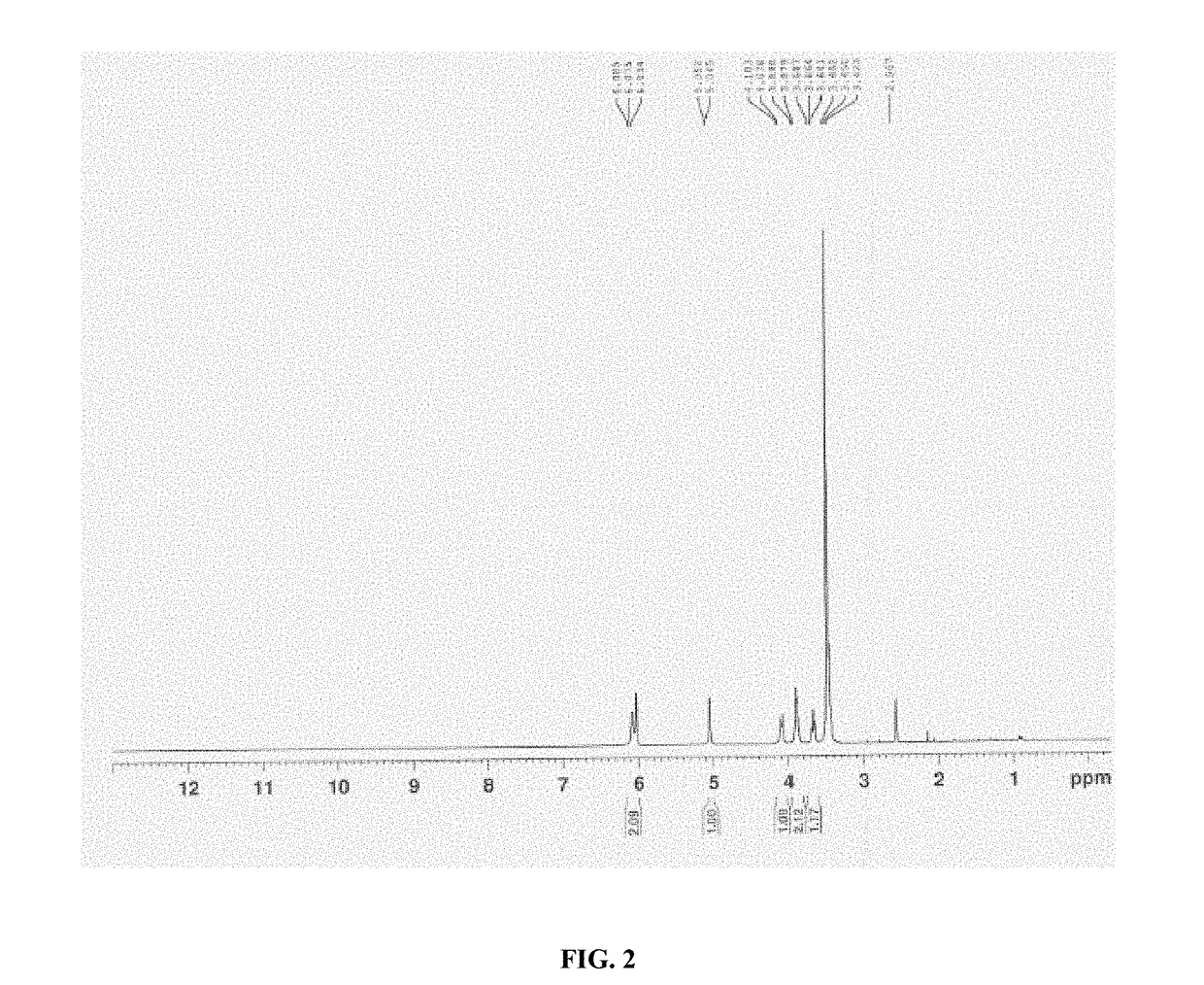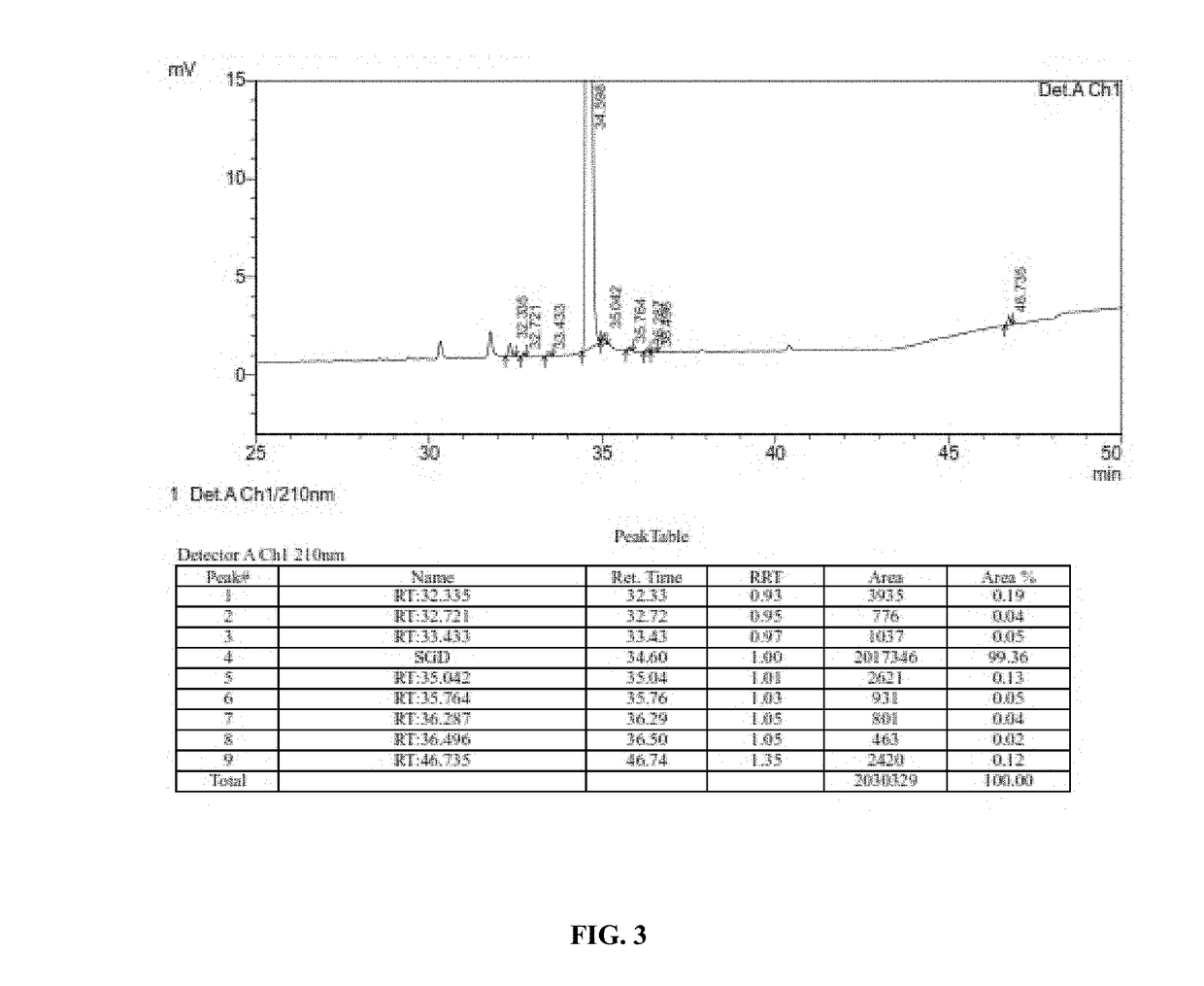Processes for preparation of sugammadex and intermediates thereof
a technology which is applied in the field of preparation of sugammadex and intermediates thereof, can solve the problems of high cost of dialysis purification, difficult removal of triphenylphosphine oxide from the reaction mass, and inconvenient achieves convenient use at industrial scale, good yield, and high purity
- Summary
- Abstract
- Description
- Claims
- Application Information
AI Technical Summary
Benefits of technology
Problems solved by technology
Method used
Image
Examples
example 1
Preparation of 6-perdeoxy-6-per-chloro gammacyclodextrin
[0182]In a four-neck round bottomed flask (2 L) equipped with mechanical stirrer, thermometer pocket in a tub charged anhydrous DMF (250 ml) under nitrogen atmosphere. Triphosgene (36.5 g, 0.123 mol) was added to the flask at 0-15° C. and the mixture was stirred for 1 h. Dry gamma cyclodextrin (20 g, 0.015 mol) was added to the obtained slurry with stirring for 30 min followed by addition of DMF (50 ml). The reaction mixture was heated at 65-70° C. 16 h. After the completion of reaction, the reaction mixture was cooled and diisopropyl ether (800 ml) was charged to the mixture to precipitate out the material. The solvent mixture of DMF and diisopropyl ether was decanted off from the reaction mixture to obtain gummy brown mass. The reaction mass was treated with saturated sodium bicarbonate solution (800 ml) which leads to precipitation of the solid. The precipitated solid was filtered, washed with the water (250×3 ml) and dried....
example 2
Preparation of 6-perdeoxy-6-per-chloro gamma-cyclodextrin
[0184]In a 5 L four-necked flask equipped with stirrer, dropping funnel, nitrogen inlet, and thermometer with pocket, oxalyl chloride (293.8 g, 198.5 ml, 2315 mmol) was added to DMF (1200 ml) and maintained the mixture at 0-5° C. under nitrogen followed by stirring at 20-25° C. for 1 hr. A solution of gamma-cyclodextrin (100 g, 77.16 mmol) in DMF (500 ml) was added to above mixture at 5-10° C. under nitrogen. The mixture was stirred at 65-70° C. for 14-16 hr. After the completion of reaction, the reaction mixture was cooled to 20-25° C. and diluted with diisopropyl ether (1.2 L). The organic layer was decanted and the viscous residue was treated with 10% NaOH solution at 5-10° C. until PH=8. The resulting slurry was stirred for one hour at 20-25° C. The slurry was filtered under vacuum and the solid was washed with water (3×500 ml) and dried under vacuum. The crude material was suspended in methanol (750 ml), stirred for 30 mi...
example 3
Preparation of 6-perdeoxy-6-per-chloro gamma-cyclodextrin
[0189]In a clean, dried SOL glass reactor equipped with stirrer, dropping funnel, nitrogen inlet, and thermometer with pocket was charged anhydrous dimethylformamide (15 L, moisture content NMT 0.4%) while maintaining the temperature at 0-5° C. (using dry ice acetone bath). Oxalyl chloride (2 L, 23635 mmol, 30 eq) was added slowly over a period 4-5 hr (while maintaining the temperature below 5° C.) and stirring was continued for 1 hr at the same temperature. A solution of dry gamma-cyclodextrin (1.0 kg, 770.94 mmol) dissolved in dimethylformamide (5 L) was added slowly into the above reaction mixture. The solution was heated at 65-70° C. for 16 hr. The reaction was monitored by TLC at regular intervals. After the completion of reaction, the reaction mixture was cooled to room temperature and diisopropyl ether (10 L) was added to the reaction mixture with stirring. The gummy solid precipitate out. The upper layer solvent was de...
PUM
| Property | Measurement | Unit |
|---|---|---|
| temperature | aaaaa | aaaaa |
| temperature | aaaaa | aaaaa |
| temperature | aaaaa | aaaaa |
Abstract
Description
Claims
Application Information
 Login to View More
Login to View More - R&D
- Intellectual Property
- Life Sciences
- Materials
- Tech Scout
- Unparalleled Data Quality
- Higher Quality Content
- 60% Fewer Hallucinations
Browse by: Latest US Patents, China's latest patents, Technical Efficacy Thesaurus, Application Domain, Technology Topic, Popular Technical Reports.
© 2025 PatSnap. All rights reserved.Legal|Privacy policy|Modern Slavery Act Transparency Statement|Sitemap|About US| Contact US: help@patsnap.com



